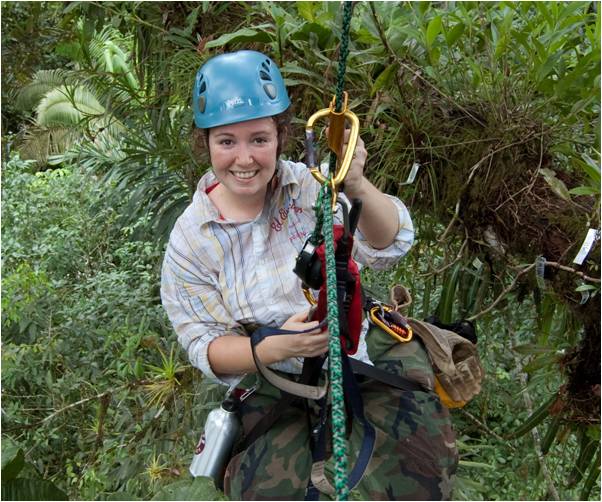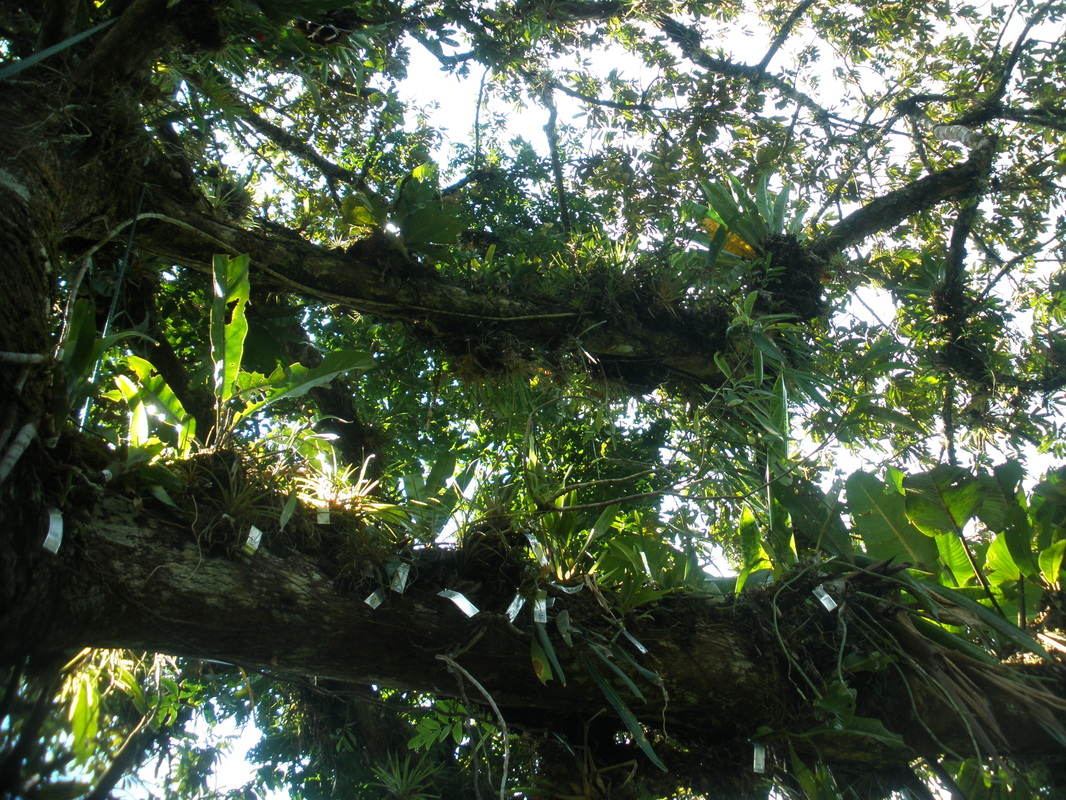This question is important because old-growth tropical and (some) temperate forests have diverse and abundant epiphyte populations which are integral for the sustainable function of the forest.
The answer is... we don't know. However, some (lucky!) researchers in the tropics are working on this. A paper recently published by Woods & DeWalt (available on this page) studied the epiphyte populations of four secondary forests in Panama that had been left to recover after disturbance for 35, 55, 85 and 115 years.
- Species richness (number of different species) reached 74 % of that of old-growth forests.
- Community composition (the combination of species) reached 75 % of old-growth forests after 115 years.
So it appears that, given enough time, epiphyte richness and composition will recover. However, not everything recovered:
- The density of epiphytes (plants per tree) reached only 49 % of old-growth forests.
The authors speculate that this slow recovery of epiphyte density "may be due to a low probability of colonisation of young host trees caused by epiphyte dispersal limitation".
They also say:
"Given another 100 years, epiphyte densities in secondary forests in central Panama might approach old-growth levels, but we conclude that, in the short-term, secondary moist forests are unlikely to compensate biologically for the loss of biological diversity and ecosystem functioning that high epiphyte densities provide. In tropical moist forests, oldgrowth forests are invaluable for the conservation of epiphytes, and secondary forests need more than 115 yr to recover all aspects of old-growth forest community structure."



 RSS Feed
RSS Feed
